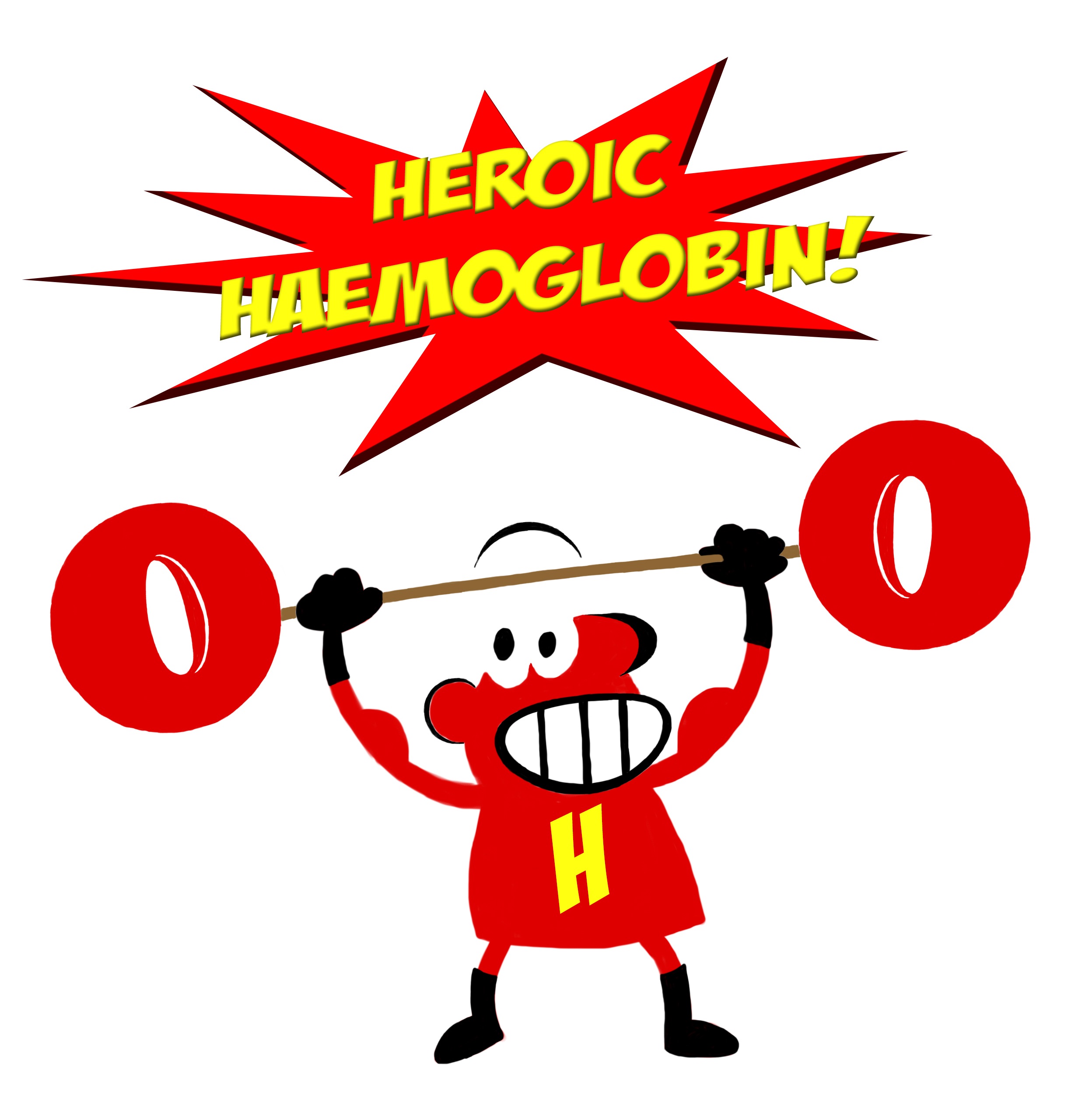
Science Day 2014
Science Festival Theme: Structures and Patterns
Department of Biochemistry Theme: Heroic Haemoglobin

Our 2014 Event was held on Saturday 15th March and was hosted by Jules Griffin, Helen Mott and Darerca Owen. This was themed around the title of ‘Heroic Haemoglobin’ where visitors of all ages could participate in hands-on activities such as:
- Arts & Crafts
Visitors could create their own malaria parasite using a range of art supplies.
- Chemistry of Iron
This demonstration allowed visitors to see the difference in colour of oxygenated and de-oxygenated blood. One of the demonstrators added a few drops of Potassium Thiocyanate to a solution of Iron (III) Chloride which caused the colour to change from orange to dark red. There was also a discussion about why veins look blue.
- CSI Haemoglobin
Iron in haemoglobin catalyses the chemiluminescent reaction of luminol to produce a blue glow - this is used by police forensics to find traces of blood at crime scenes. During this demonstration, visitors could add luminol to two test tubes (both containing diluted red food dye, one containing iron complex) to see which one of them caused a blue glow.
- Dance your Haemoglobin
Human haemoglobin displays precise changes in internal cooperativity in response to exactly how the first two oxygens bind to it. This was explained in the form of a dance routine which visitors could participate in.
- Foetal Haemoglobin
Magnets of different strengths were concealed within table tennis balls and then used to pick up small steel balls. This helped to explain how foetal haemoglobin has a higher affinity for Oxygen than maternal haemoglobin.
- Healthy Eating
Posters and puzzles were used to explain how healthy foods help in having 'heroic haemoglobin'.
- Horrible Haemoglobin (including poisons and Sickle Cell Anaemia)
Demonstrators explained how 'horrible haemoglobin' affects the body. This including information about cigarettes and other poisons. Visitors were also able to view sickled cells using a Microscope.
- O2 and CO2 Monitoring
Using Oxygen monitors, visitors were able to see what activities cause O2 levels to drop. A few of these activities included using an exercise bike (high intensity) and completing a step challenge (low intensity).
- Train Track of the Body
A train track was set up in the shape of a body. A train travelled throughout the body, collecting and dropping off different coloured balls on route (the different coloured balls represented O2 and CO2).
- TTC Experiment
This demonstration had batches of respiring and non-respiring yeast colonies on separate YPD agar plates. TTC is a redox indicator that stays colourless when oxidized and turns red when reduced. Because there is dehydrogenase activity, adding a solution (ca 5 ml) of 0.5% TTC dissolved in 100mM trisHCl at pH 7 would cause the respiring colonies to turn red in minutes while the non-respiring ones stay white. Visitors were asked to guess which yeast colonies would be respiring.
- Videos and Computers
There were a variety of games and activities for visitors to complete throughout the event.
There was also an optional quiz that could be completed throughout the Event.
Departmental Volunteers: Samrein Ahmed, Hannah Ambler, Sio Ball, Kasia Barbusinska, Srinjan Basu, Bessie Bilsland, Heather Bruce, Ayca Cankorir Cetinkaya, Natasha Clayton, Yajing Chu, Marc de la Roche, Duygu Dikicioglu, Ivonne Gamper, Chris Green, Jo Goundry, Dan Hill, Barbara Humphrey, Emmanuelle Lecommandeur, Chin Mei Lee, He-Di Liu, Stephanie Low, Ben Luisi, Catherine McDonnel, Christine McLoughlin, Xue Pei, Lira Puebla, Jo Rees, Stephen Rowden, Suzanna Scott-Drew, Arooj Shafiq, Jemima Thomas, Kerstin Timm, Jo Woods, Hazel Zheng
